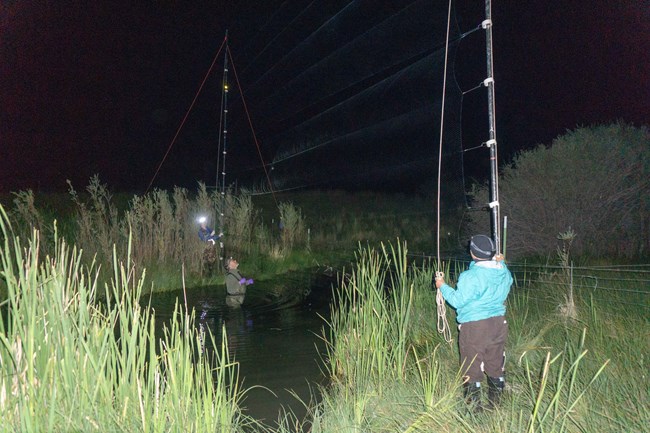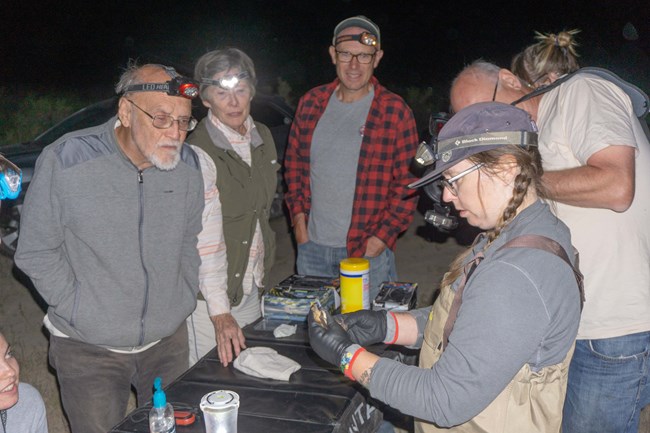Part of a series of articles titled The Midden - Great Basin National Park: Vol. 20, No. 1, Summer 2020.
Article
Bat Blitzes Show Many Species in Park
This article was originally published in The Midden – Great Basin National Park: Vol. 20, No. 1, Summer 2020.

NPS Photo by Gretchen Baker
Humans remain largely unaware of the vast numbers of bats flying above us each night. Bats are the only mammals capable of true flight and use high frequency echolocation calls to detect and capture insect prey. Although most echolocation calls are above the range of human hearing, insects are able to detect, avoid, and interfere with bat calls in the night skies.
Bats provide billions of dollars in ecosystem services through insect predation which reduces food costs, the need for harmful pesticides, and disease risk from insect vectors such as mosquitoes. Unfortunately, bat populations face unprecedented threats such as habitat loss, climate change, wind energy development, and disease. White-nose syndrome (WNS), a fungal disease, has spread across the US in last decade, killing millions of bats in its wake.
In an effort to learn more about populations, the park led two survey events for bats last summer. The first of these events was the Great Basin National Park (GRBA) BioBlitz, held August 20-22. GRBA’s BioBlitz is an annual citizen-science event which focuses on a different group of organisms each year and serves to increase our knowledge of the target taxa within the park, as well as educate the public. The Mojave Network (MOJN) Bat Blitz was held at GRBA August 26-30. The MOJN Bat Blitz is an annual event in which biologists from parks within the Mojave Network get together for a coordinated survey effort of the bat community in a specific area (the host park or unit).

NPS Photo by Joseph Danielson
For both blitzes, groups went to various survey areas (e.g., water sources, flyways, near roosts) to capture bats via mist nets or harp trap. For each individual captured, groups recorded the species, sex, age, reproductive condition, weight, and other relevant measurements. All captured bats were released by hand and no specimens were collected. Acoustic surveys were conducted in conjunction with trapping events at most sites.
The GRBA BioBlitz had over 60 participants and conducted surveys at six locations over two nights. Through this effort, 821 bats representing 8 species were captured and 7 species were detected acoustically for a total of 9 species documented overall, including Pallid bat (Antrozous pallidusi), Townsend’s big-eared bat (Corynorhinus townsendii), big brown bat (Eptesicus fuscus), hoary bat (Lasiurus cinereus), silver-haired bat (Lasionycteris noctivigans), western small-footed bat (Myotis ciliolabrum),long-eared myotis (M. evotis), long-legged myotis (M. volans), and Mexican free-tailed bat (Tadarida brasiliensis).

NPS Photo by Joseph Danielson

NPS Photo by Joseph Danielson
Last updated: February 8, 2024
